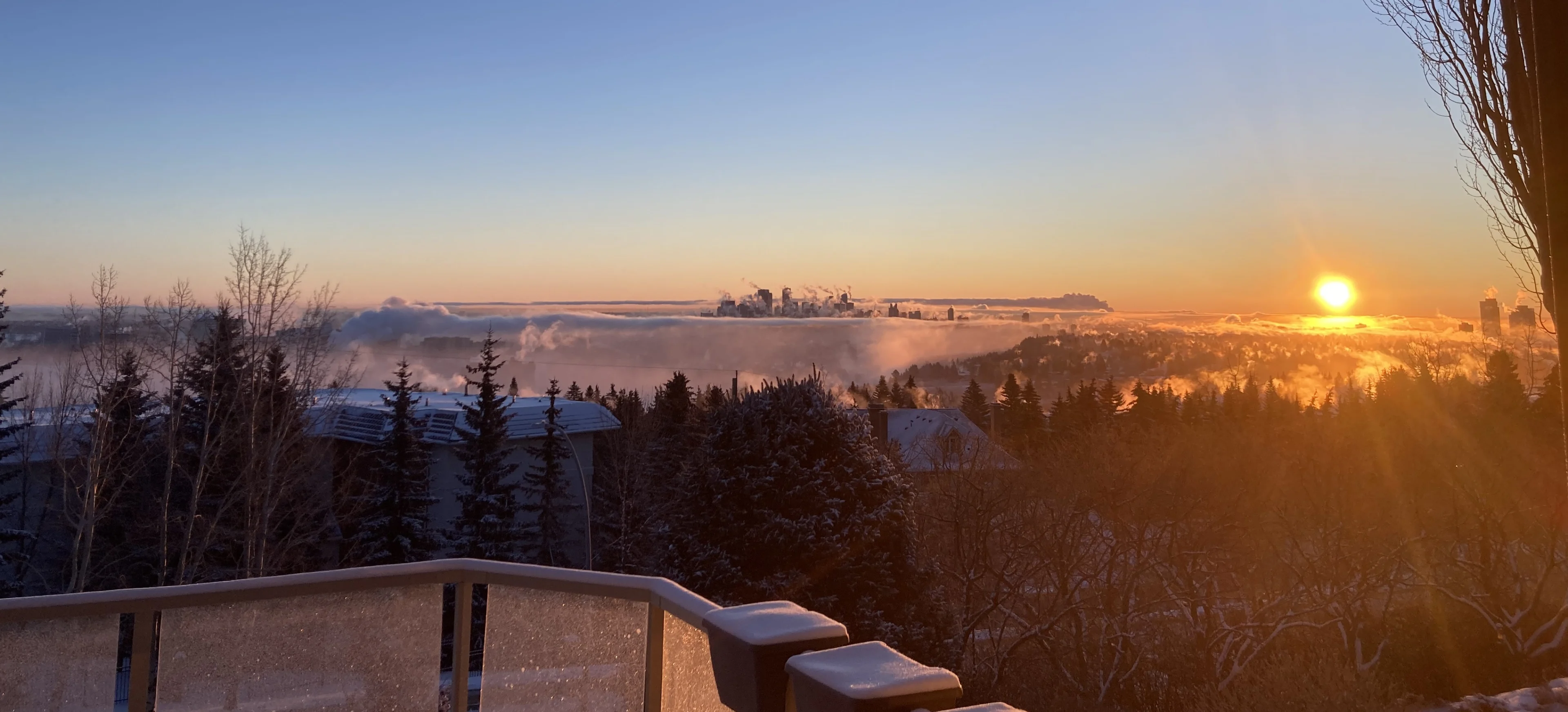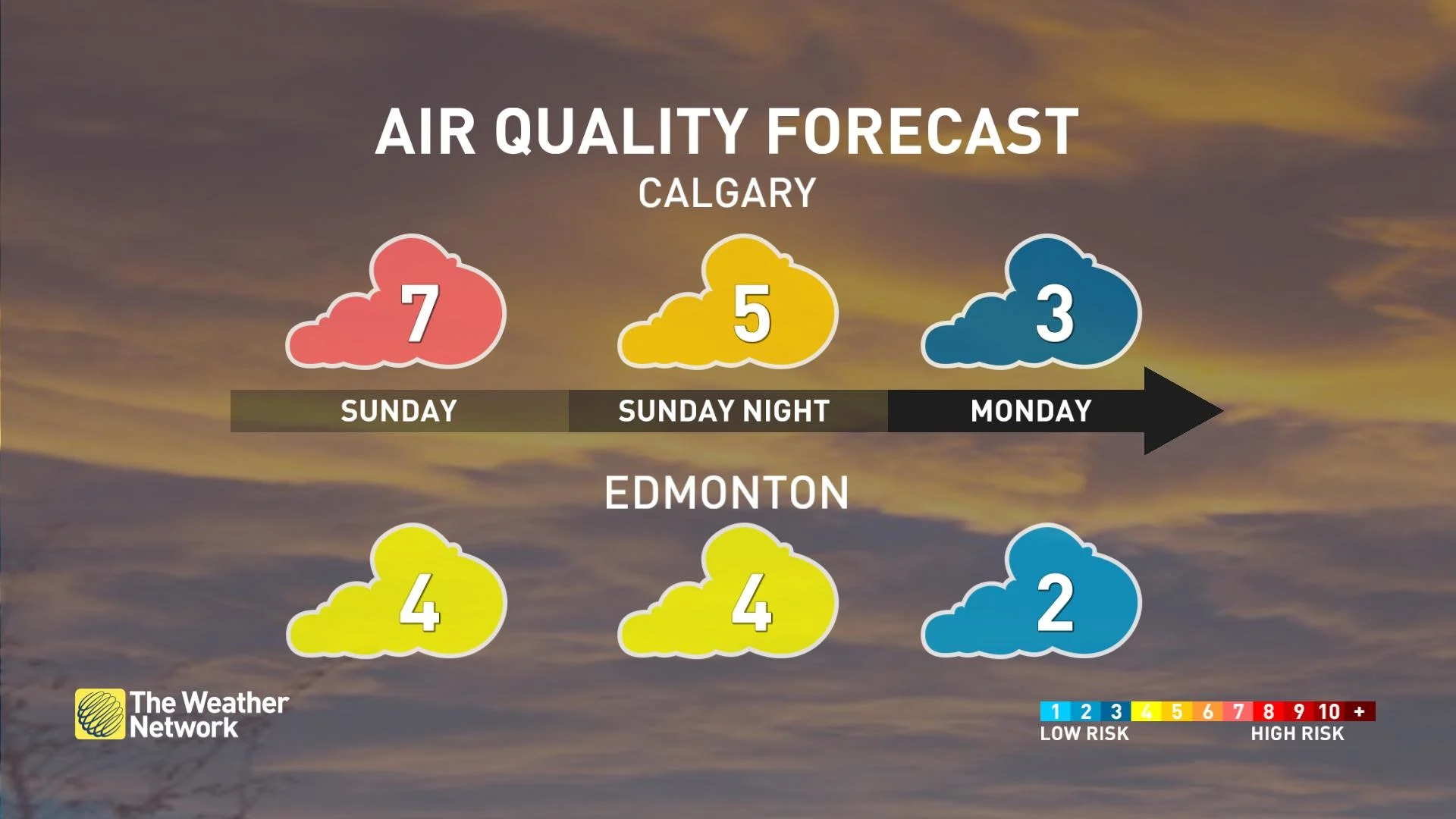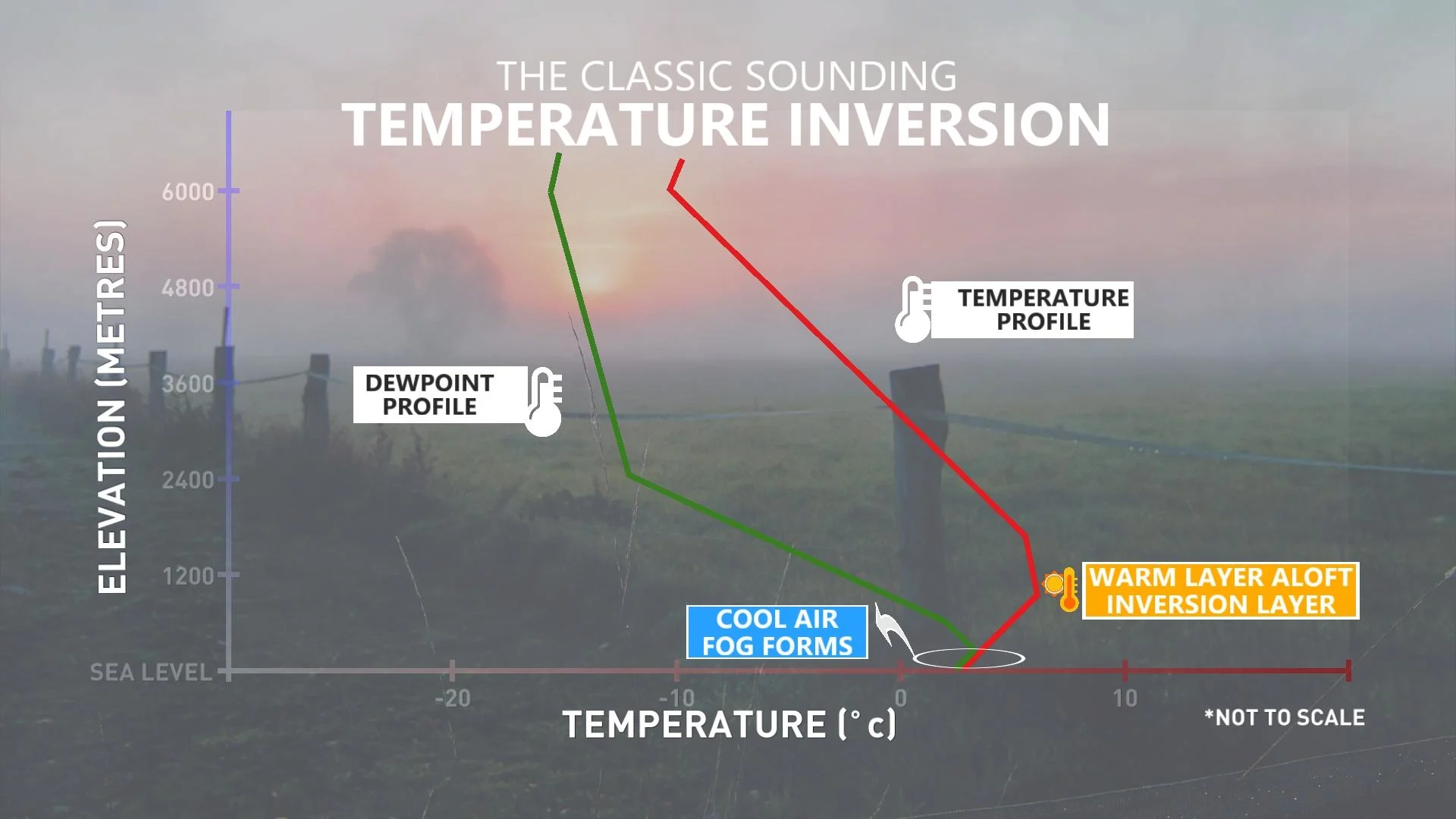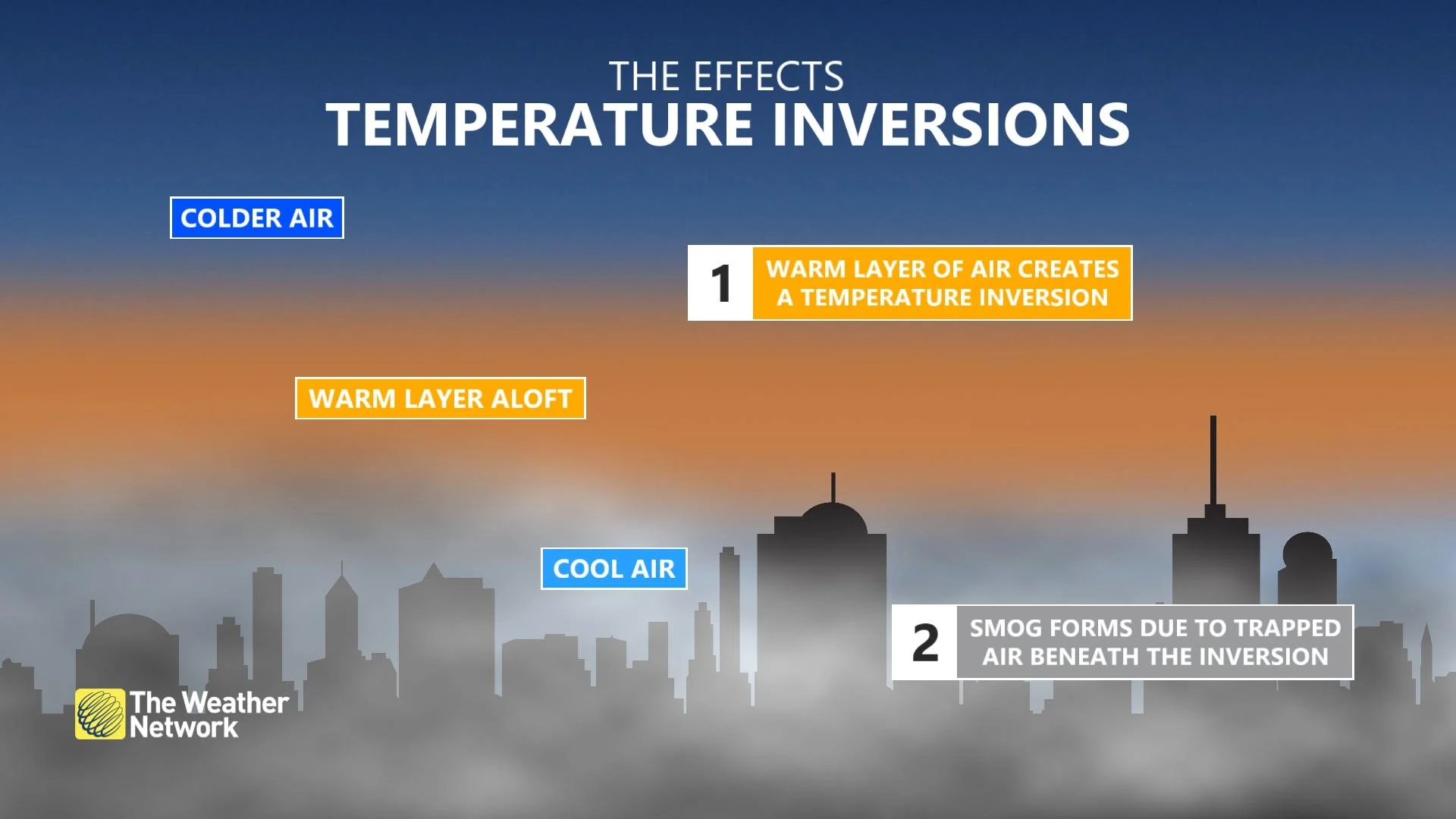
Air quality alerts in Calgary as inversion traps smog near ground
A stagnant pattern will force Calgary to contend with poor air quality over the next couple of days
Even though Calgary is finally and blissfully warming up after the recent cold snap, anyone in and around the city should continue using caution outdoors as poor air quality lingers into the beginning of the week.
Folks throughout the region likely noticed the dingy haze in the air on Sunday as pollutants like smoke and vehicle exhaust hang low near the surface.
DON'T MISS: Ready for a warm-up, Canada? You’ll love next week’s forecast

Environment and Climate Change Canada (ECCC) issued a special air quality statement for the Calgary metro area as a result of this smoggy pattern.
“Poor air quality will persist until pollutants can mix away from the surface,” ECCC said in its statement on Sunday. “This may be as late as midweek.”
People suffering from respiratory illnesses, as well as those living with chronic respiratory conditions like asthma or COPD, are vulnerable to health issues as a result of the increase in pollutants. Staying indoors or using quality masks while outside can help reduce the effects of poor air quality.

The latest forecast for Calgary reflected an Air Quality Index of 7 in and around the city, indicative of the hazardous pollution folks may breathe in. These issues are largely confined to the Calgary region—the air quality is much better up the road in Edmonton.
_DON'T MISS: Sick of winter? Look on the bright side: we’re halfway to spring!
A classic temperature inversion is to blame for Calgary’s pollution issues this weekend.
Temperatures throughout the city hovered around -11°C for most of Sunday morning. Meanwhile, weather models indicated that temperatures rapidly rose to near the freezing mark just 350-400 m above the surface.

The sharp density difference between cold air below and warm air aloft acts like a ‘ceiling’ that caps the atmosphere, trapping all that pollution close to the ground.
This pollution will remain in place until winds pick up or the inversion lifts, allowing the atmosphere to mix and ventilate the area.
Header image submitted by Bruce Yorga.






